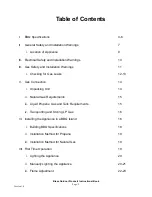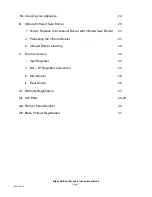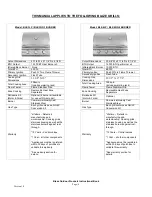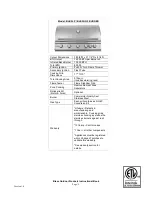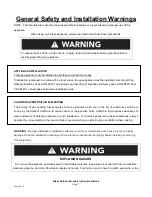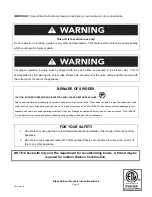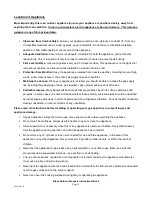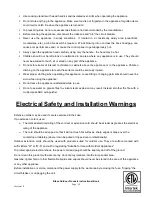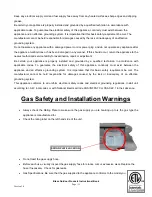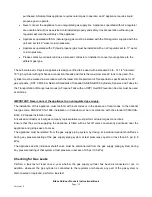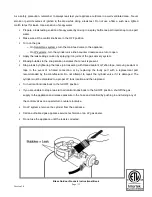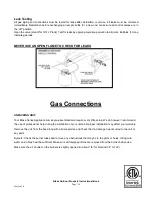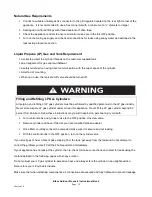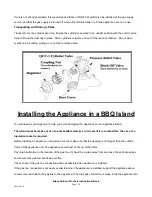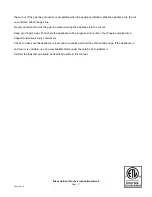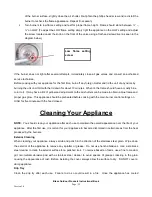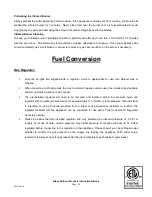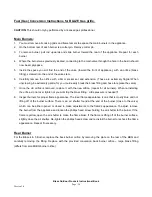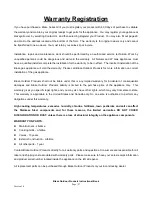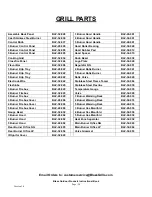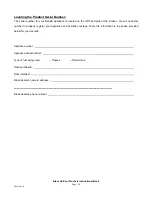
Blaze Outdoor Products Instructional Book
Page | 15
Version 1.4
Natural Gas Requirements
Connect a suitable natural gas flex connector to the grill regulator located on the rear right corner of the
applian
ce. It is recommended to use a flex connector with a minimum of a ½” diameter or larger.
Sealing all non-flared fittings with thread sealant or Teflon tape.
Check the appliance controls to ensure all control valves are in the full OFF position.
Turn on the main gas supply and check all connections for leaks using soapy water as described in the
leak testing procedure section.
Liquid Propane (LP) Gas and Tank Requirement
A collar to protect the cylinder threads on the customer supplied tank.
An arrangement for gas vapor withdrawal.
A safety relief device having direct communication with the vapor space of the cylinder.
A method of mounting.
When not in use, the tank shut off valve should be turned off.
Turn control knobs and cylinder valve to the OFF position. Unscrew valve.
Remove cylinder and have it filled at your local qualified propane dealer.
Once filled, carefully connect the valve and make sure it is secure and not leaking.
With the control knobs in the OFF position, turn on the cylinder valve.
If you smell gas or hear a hiss of gas escaping from the tank, get away from the tank and do not attempt to
correct the problem yourself. Call the Fire Department immediately.
If your appliance has no leak at the cylinder, then re-check for loose connections and retest for leaks using the
method detailed in the following pages with soapy solution.
Do not subject your LP gas cylinder to excessive heat, and always store the cylinder in an upright position.
Never store your LP cylinders indoors.
Make sure that when attaching components, all connections are secured and fully tightened to prevent leakage.
Filling and Refilling LP Gas Cylinders:
All purging and refilling of LP gas cylinders must be performed by qualified personnel in the LP gas industry.
Never store a spare LP gas cylinder under or near this appliance. Never fill the LP gas cylinder beyond 80
percent full. Failure to follow these instructions may result in explosion, personal injury or death.


